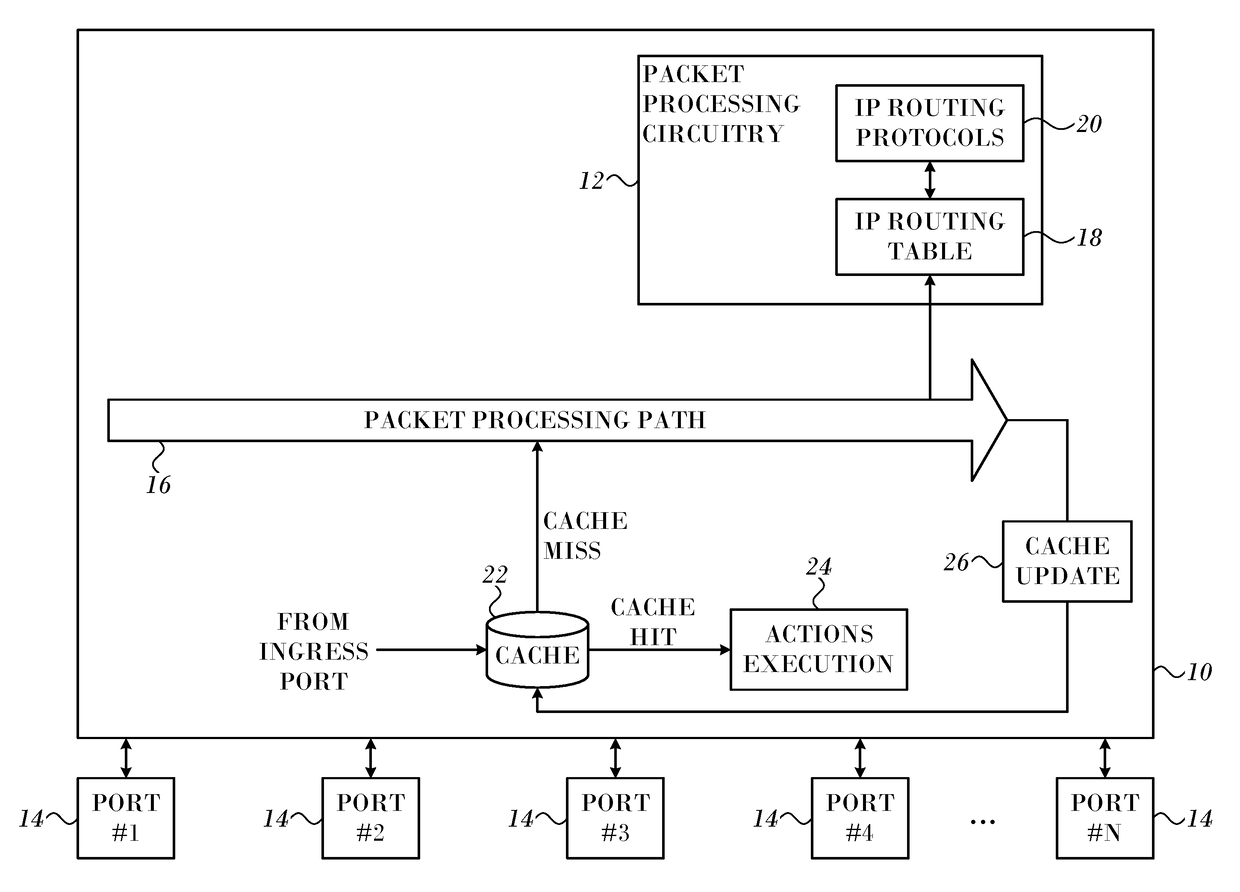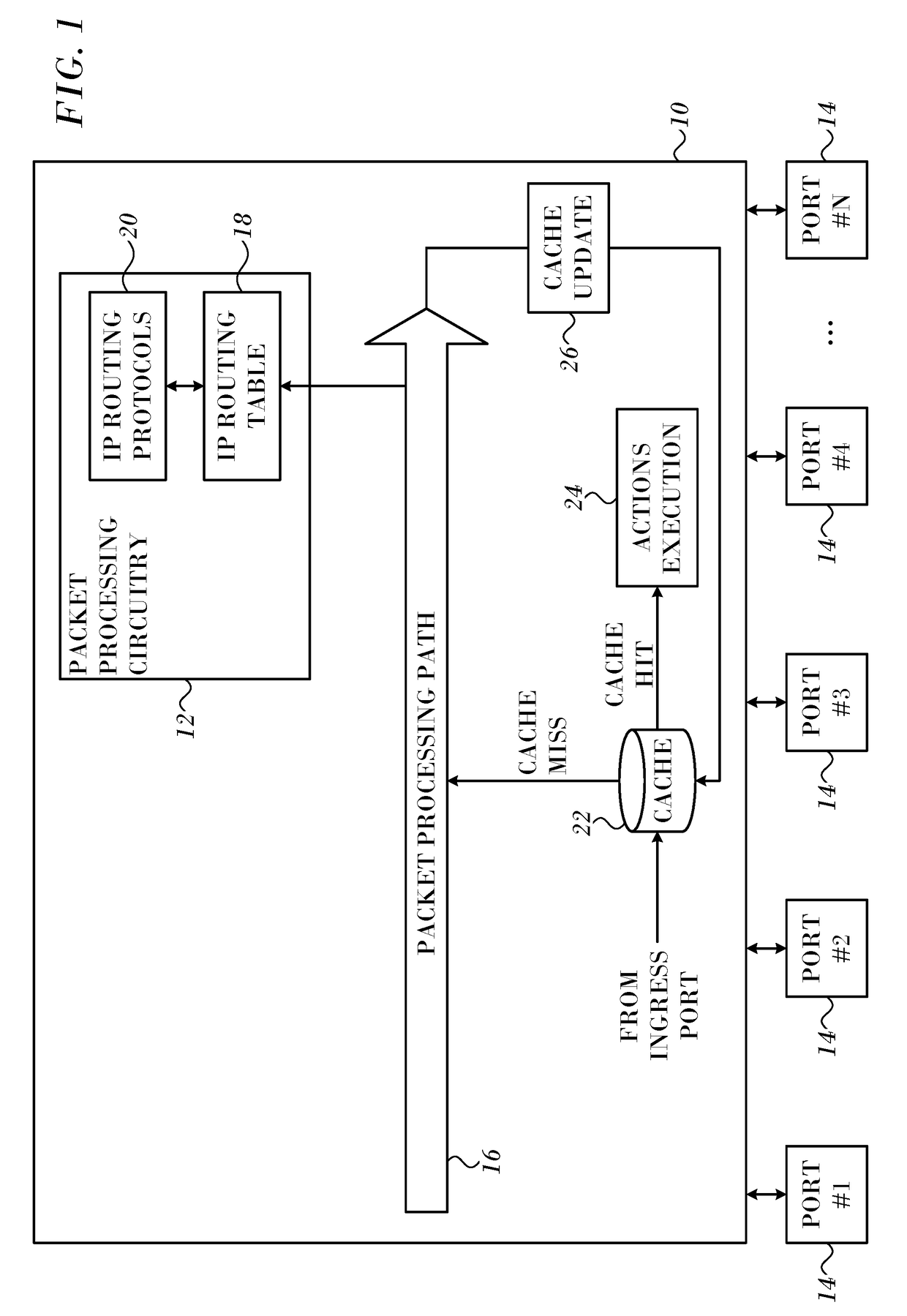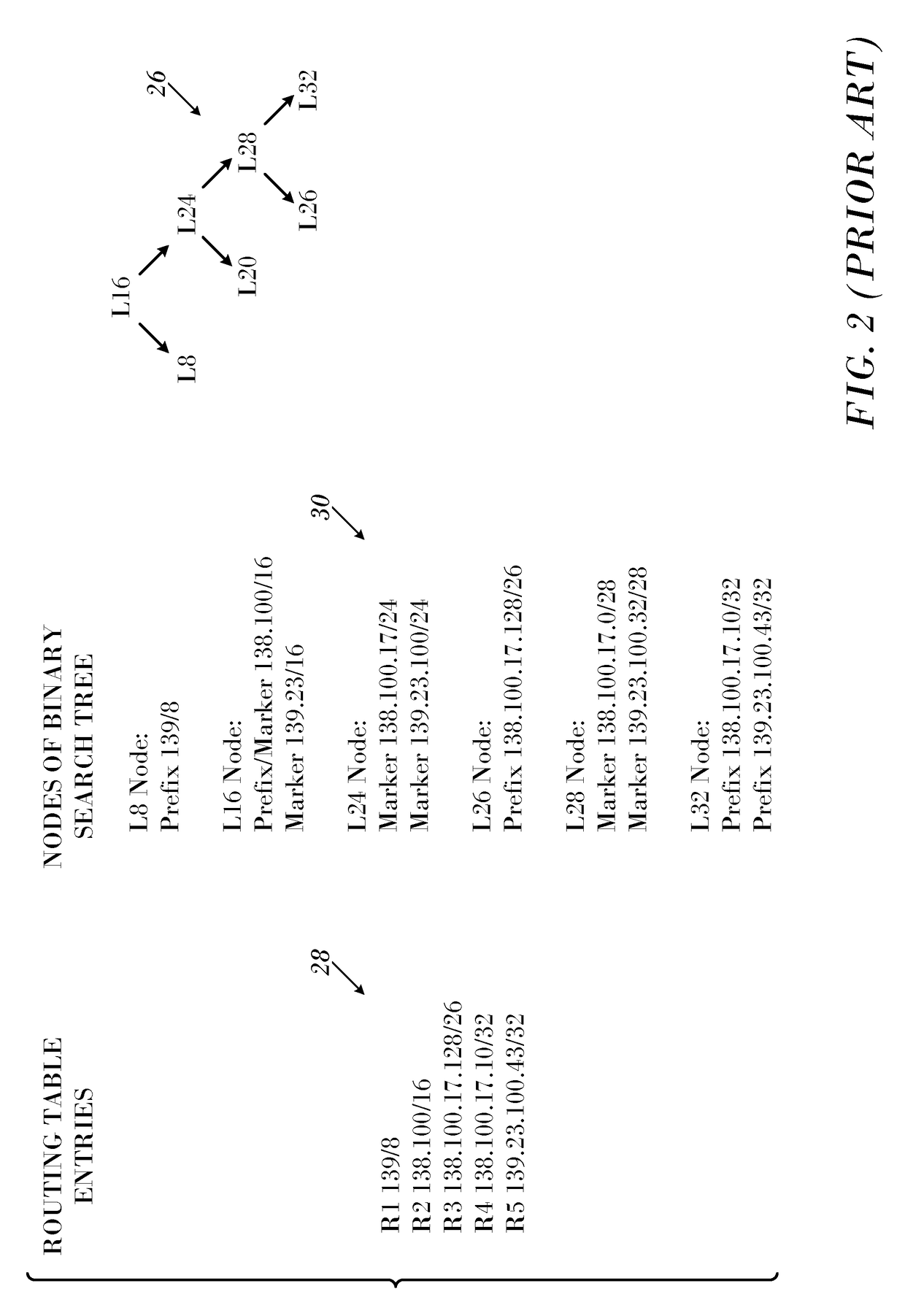Jump on a Match Optimization for Longest Prefix Match using a Binary Search Tree
a search tree and optimization technology, applied in the field of digital information transmission, can solve the problems of difficult implementation of lpm, high power consumption and heat dissipation of relatively expensive router circuitry, and reduce markers. , to achieve the effect of reducing the number of markers and the number of accesses
- Summary
- Abstract
- Description
- Claims
- Application Information
AI Technical Summary
Benefits of technology
Problems solved by technology
Method used
Image
Examples
example 1
[0043]A lookup for DIP 138.100.17.10 finds prefix / marker 138.100 / 16 at node L16 in a first memory access. The search proceeds in the right subtree. A second memory access at node L24 finds a match with marker 138.100.17 / 24. Accordingly, the right subtree is selected. In a third memory access at node L28 there is a match with marker 138.100.17.0 / 28. Again the right subtree is selected. In a fourth memory access at node L32 there is a match with the prefix 138.100.17.10 / 32. The search ends. The entry R4 in routing table fragment 28 (138.100.17.10 / 32) is used for further conventional processing of the packet.
example 2
[0044]Similarly a lookup for DIP 139.23.100.43 follows the same path as the preceding lookup, but relies on different markers. This lookup also requires four memory accesses. A first memory access at node L16 finds a match to marker 139.23 / 16. The search proceeds in the right subtree. A second memory access at node L24 finds a match with marker 139.23.100 / 24. Again the search moves to the right subtree. A third memory access at node L28 finds a match with marker 139.23.100.32 / 28. Once again the search moves to the right subtree. A fourth and final memory access at node L32 matches prefix 139.23.100.43 / 32. Node L32 is a leaf node. Here the search ends and entry R5 in routing table fragment 28 is used for further processing of the packet.
example 3
[0045]A lookup for DIP 138.100.17.143 in a first memory access to node L16 finds a match with prefix / marker 138.100 / 16. The search proceeds in the right subtree. A second memory access at node L24 matches marker 138.100.17 / 24. Again the search proceeds in the right subtree. A third memory access at node L28 finds no matches with either of the markers. Therefore, the left subtree of node L28 is selected. In a fourth memory access at node L26 there is a match with the 26 MSB of prefix 138.100.17.128 / 26. This can be appreciated by a decimal-to-binary conversion of the DIP and the prefix, which is shown in Table 2. In the rightmost column, it will be apparent that when the 26 MSB of the DIP and prefix are unmasked, the left two bits of the binary representation in the rightmost column (10) as well as all the bits in the three left columns are common to both of them.
TABLE 2Bits1-89-1617-2425-32DIP (Decimal)13810017143DIP (Binary)10001010011001000001000110001111Prefix (Decimal)13810017128...
PUM
 Login to View More
Login to View More Abstract
Description
Claims
Application Information
 Login to View More
Login to View More - R&D
- Intellectual Property
- Life Sciences
- Materials
- Tech Scout
- Unparalleled Data Quality
- Higher Quality Content
- 60% Fewer Hallucinations
Browse by: Latest US Patents, China's latest patents, Technical Efficacy Thesaurus, Application Domain, Technology Topic, Popular Technical Reports.
© 2025 PatSnap. All rights reserved.Legal|Privacy policy|Modern Slavery Act Transparency Statement|Sitemap|About US| Contact US: help@patsnap.com



